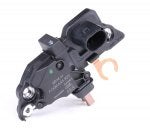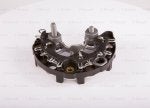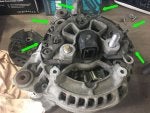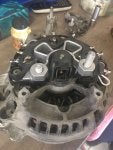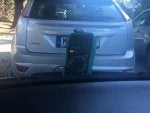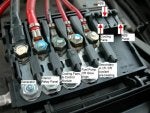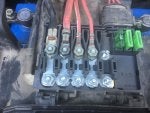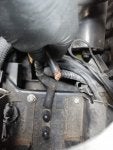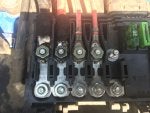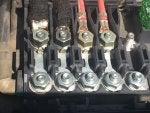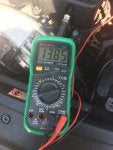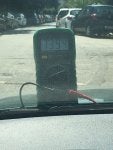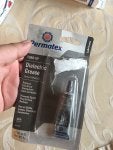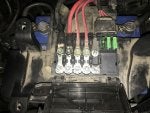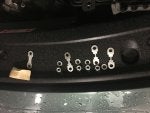Alternator prob:
The 120A Bosch alternator is charging but not enough. With engine on its 13.4-13.6V with no consumers on and will drop to 11.5-12.4V when I turn on consumers (radio, lights, aircon). In my 2100km summer trip the red battery light on the dash flashed a couple of times when driving on the motorway :? New 60A Bosch battery replaced February.
About a year ago I have replaced the regulator with Bosch blue part. The old part was knackered and the brushes were almost eaten up. Did they put in a 90A regulator although I think the part is the same for 90 and 120A
Bosch regulator
![bosch regulator.jpg bosch regulator.jpg]()
I read that apart from the regulator, theres also a different rectifier part by Bosch which also gets messed up, a diode burns and makes the alternator output less.
![bosch rectifier.jpg bosch rectifier.jpg]()
How to test and check before throwing (again) parts to a problem?
Aircon code 20 shows exactly the same voltage when testing with multimeter
EDIT: OK I understand the rectifier is the part below the regulator - can this be replaced with the alternator on the car?
The 120A Bosch alternator is charging but not enough. With engine on its 13.4-13.6V with no consumers on and will drop to 11.5-12.4V when I turn on consumers (radio, lights, aircon). In my 2100km summer trip the red battery light on the dash flashed a couple of times when driving on the motorway :? New 60A Bosch battery replaced February.
About a year ago I have replaced the regulator with Bosch blue part. The old part was knackered and the brushes were almost eaten up. Did they put in a 90A regulator although I think the part is the same for 90 and 120A
Bosch regulator
I read that apart from the regulator, theres also a different rectifier part by Bosch which also gets messed up, a diode burns and makes the alternator output less.
Bosch rectifier part
How to test and check before throwing (again) parts to a problem?
Aircon code 20 shows exactly the same voltage when testing with multimeter
EDIT: OK I understand the rectifier is the part below the regulator - can this be replaced with the alternator on the car?


